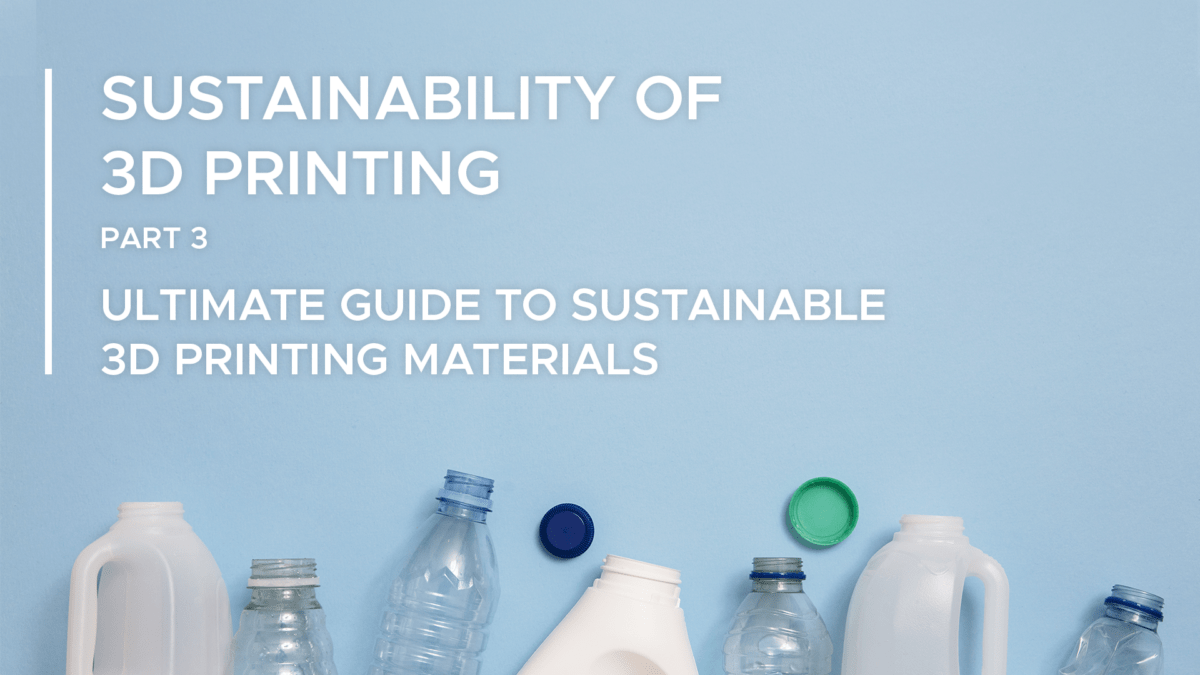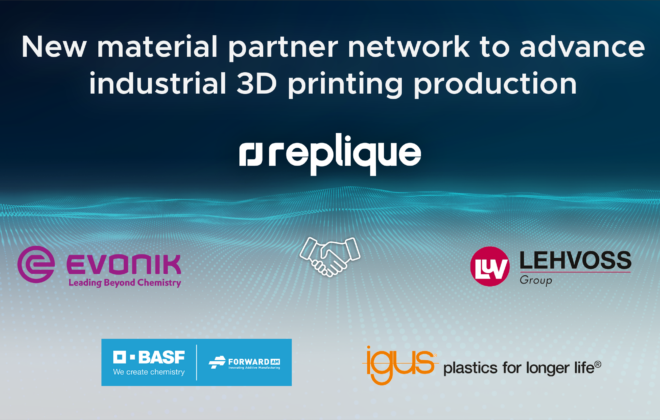Ultimate guide to sustainable 3D printing materials: Pathing the way for a circular economy
Reducing plastic waste is a sustainability goal many organizations are embracing. It is not only environmentally friendly, but also a smart business practice that industries and manufacturers are adopting to meet growing consumer concerns and demands. Global cosmetics firm L’Oreal, for example, recently committed to using 100% recycled or bio-based plastics in all of its packaging by 2030.
Also, in 3D printing (or additive manufacturing = AM), sustainability becomes a mayor goal. Additive manufacturing is still a young industry full of innovative start-ups looking for ways to differentiate the market from traditional manufacturing. Creating sustainable materials is one of the ways to do so and as AM relies heavily on technology, it can be more flexible, adaptable and promising to grow even greener in the years to come. In this blog article we will show you the different sustainable material options within the 3D printing market, that have been developed so far.
Table of Content
- What is eco-friendly 3D printing material?
- Recycled 3D printing materials
- Bio-based or biodegradable 3D printing materials
- Filled filaments and bio-composites
- Selection guide for sustainable 3D printing materials
What is eco-friendly 3D printing material?
So far, people mostly use non-biodegradable materials in 3D printing. ABS for example, one of the most common 3D printing materials used in filament extrusion, is made from petroleum. However, to achieve higher sustainability, the different manufacturers of printing materials now also offer various green material solutions, from plant-based materials, biodegradable materials, recycled materials, materials that include waste from other industries in their composition and materials with new formulations.
In general, the sustainable material solutions can be defined by three different approaches:
- Transition to a circular economy where materials are reused and recycled
- Use environmentally friendly materials
- Reduce the environmental impact of the materials
Give polymers a second life with recycled 3D printing materials
The materials needed for filament extrusion 3D printing (FDM) have to be thermoplastics. These materials are often not the most environmentally friendly ones; however, 3D printing opens new windows for recycling them. Materials from other industries can be converted into 3D printing filament. Or materials from printing failures, support structures or simply old 3D printed parts that are no longer useful can be reused. The material can be shredded and extruded into a new spool with the same performance.
Recycled filament options within FDM
RPET
R-PET is a filament used in FDM printing that is produced out of recycled waste, such as plastic bottles, or out of waste from a virgin material manufacturing process. It is a very versatile material, and a stable and harmless plastic. It has good mechanical, thermal and chemical resistance. R-PET is easy to print and is suitable for printing prototypes, accessories, and large parts.
PET is one of the most widely used plastics in food industry and some manufacturers of R-PET indicate that it is safe for food contact. The material can be recycled again after its useful life. The amount of recycled material within R-PET can range from 45% to 100% depending on the origin of the waste.
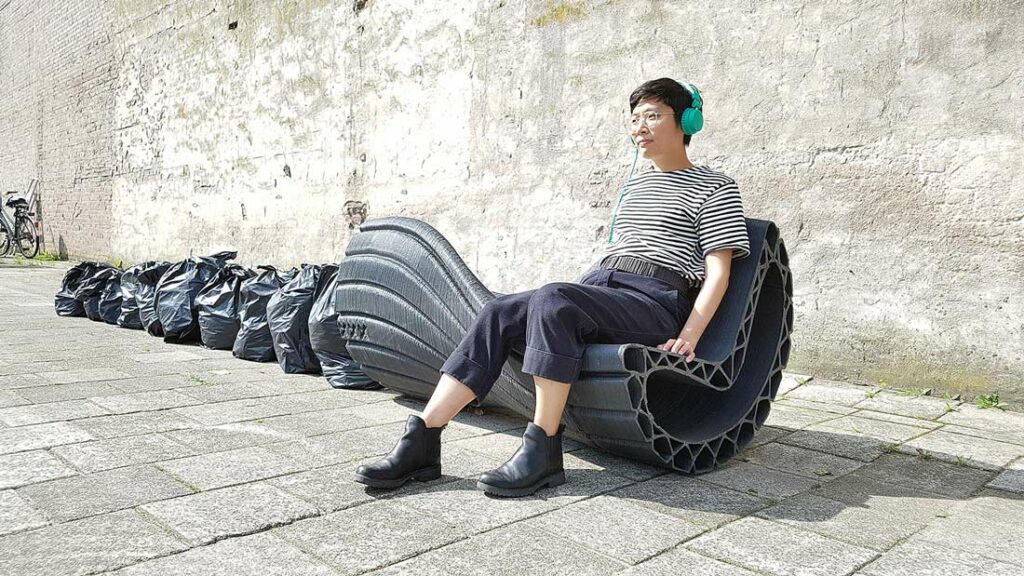
R-PLA
R-PLA mainly comes from waste filament production as well as printing waste such as supports or failed prints. Recycled filament is created from the original material, the waste is recomposed and then homogenized into a material that is easy to print and has a significantly lower environmental impact. Many R-PLA filaments contain 100% recycled material.
PLA is also bio-based and biodegradable under industrial composting conditions, making R-PLA a great alternative for achieving a sustainable product. PLA is produced in filament form to process it in FDM printing technology. PLA is a versatile material and one of the easiest materials to print. As it can be printed at high speed and maintain a good surface finish, it is mainly used for accessories and prototypes.
RECYCLED TIRE – TPE
Recycled tire filament is produced from recycled tires and belongs to the flexible 3D printing materials. The filament is composed of TPE (thermoplastic elastomer) combined with rubber from recycled tires. The material contains more than 20% recycled tire and has some of the properties inherited from rubber such as good inter-layer adhesion and good abrasion resistance. It has a hardness of 80, which makes it a very flexible material. The filament comes in black and has a rough texture. Applications include vibration isolation, robotics, and parts for models and wheels for radio-controlled vehicles.
RECYCLED TPU (Recreus – Reciflex)
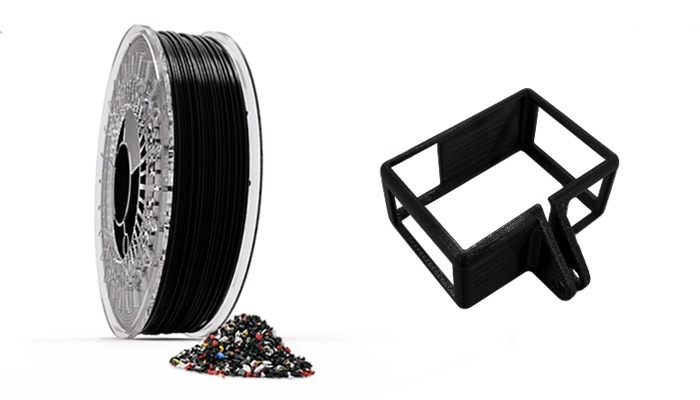
Recycled TPU is made from waste out of the footwear industry and waste from the manufacturing of TPU (thermoplastic polyurethane) filaments. The filament is only available in black, as black pigment has to be added to the mixture of different colorized materials to homogenize the color. Its hardness varies between 96A and 98A due to variations in the recycled source material. The filament maintains good mechanical properties and good solvent resistance like other TPU filaments. Among its main applications are the production of cases for electronic devices (sports cameras, mobile phones and other small electronic devices), drone guards and tires for robots and radio-controlled vehicles.
RECYCLED HIPS
Recycled HIPS (High Impact Polystyrene) is made from discarded products such as window frames and thermoformed sheets mainly from household appliances such as the inside of refrigerators or electronics housings. The resulting material has good impact resistance and is highly waterproof. HIPS for 3D printing is produced in filament form. Its most common applications are packaging and housings for electronics. HIPS can also be used as a support structure for parts printed with other materials as it can be easily removed from prints in a solution with Limonene leaving the parts clean and with a great finish.
Bio-based or biodegradable 3D printing materials
Another sustainability strategy in 3D printing is the use of materials from renewable resources and the formulation of biodegradable materials. Among the bio-based materials there are materials that can be used in FDM, SLS and MJF. These materials are eco-friendly as they can be consumed by bacteria present in industrial composting plants.
PLA
PLA (polylactic acid) is obtained from natural sources such as corn, cassava, sugar beet or sugar cane. Starch is extracted from plants and converted into dextrose by adding enzymes and then fermenting it into lactic acid, which polymerizes into PLA. PLA is part of the list of plastics of the FDA (The United States Food and Drug Administration) for its applications in the field of biomedicine and food. PLA is harder than ABS and has mechanical properties similar to PET. There are also PLA-based composites based on PLA with polyester and filled with CF that improve its mechanical properties and temperature resistance (Extrudr Green-TEC Pro). Another option available is a composite made from PLA and PHB, a bio-derived and biodegradable material with good heat resistance and mechanical durability (Fillamentum NonOilen). PLA is also biodegradable under industrial composting conditions, making it a good alternative to plastics from petroleum refining. Applications include prototyping and the production of accessories.
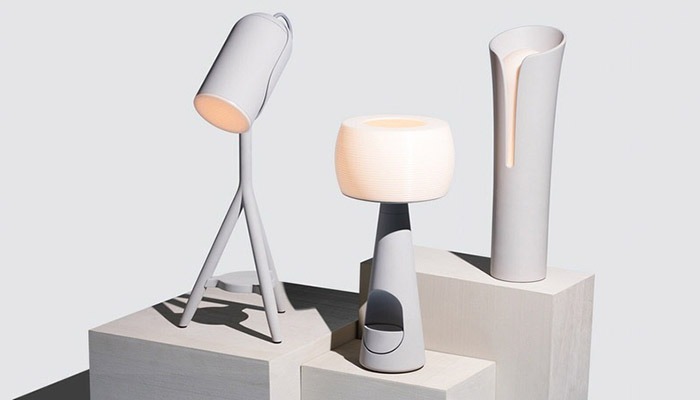
PA11
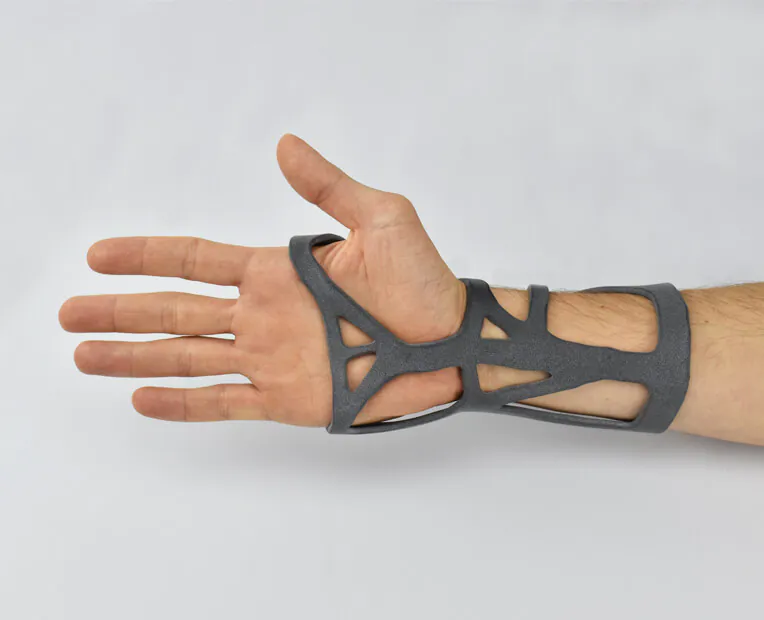
PA11 is a bio-based material, originating 100% from castor seeds and oil. Among 3D printing polymers, it stands out for its high toughness, ductility, low water absorption and impact resistance. It is also stable to light and UV radiation and therefore adapts well to climate changes. PA11 is suitable for skin contact and offers great freedom in design as it is produced in powder form. It is processed in SLS (selective laser sintering) and MJF (Multi Jet Fusion) printing technologies. The applications of PA11 are very wide. It is mostly used as a substitute for traditional injection molding materials.
BioPETGTM (Printlife – BioPETGTM)
BioPETG is a PETG material formulated to be consumed by bacteria after disposal in an industrial composting facility. Biodegradable PETG maintains the properties of PETG such as impact resistance, durability and high chemical and water resistance. It is FDA certified for food contact.
Some of the properties of PETG are similar to PET – the main difference is its hardness, as PETG is softer, making it easier to print. PETG applications include the production of items that need a certain chemical resistance, products in contact with food or products that need to withstand contact with water and moisture while maintaining their strength.
Biodegradable ABS (3D Printlife – Enviro)
Although ABS is a non-biodegradable plastic, its chemical properties have been reformulated so that certain bacteria can consume it when it is disposed. Biodegradable ABS retains the properties of ABS – high impact resistance, rigidity, high abrasion resistance and chemical resistance.
It has great versatility and is used in prototypes, accessories, and parts with certain temperature resistance. It meets biodegradability standards (ASTM D5338) and is easy to print.
Reduce the environmental impact with filled filaments and bio-composites
3D printing opens a new window to integrate waste materials into new objects. To be even more sustainable, a PLA matrix filled with different waste material is used. Often the waste used is, like PLA, of biological and biodegradable origin, obtaining a final material that is completely biodegradable and bio-based.
These materials do not have the best mechanical properties and their most common applications are usually accessories, decorative objects, design, artistic pieces and sculptures. In technical or functional pieces, the materials can hardly be used.
Filled filaments are presented in the form of filaments for FDM technologies. Due to the size of the fibres or particles with which the plastic is filled it is often necessary to use larger nozzles than usual, leading to a lower resolution, but also faster printing cycles.
Modified Polyester and oyster shell powder, flexible (Nanovia – Istroflex)
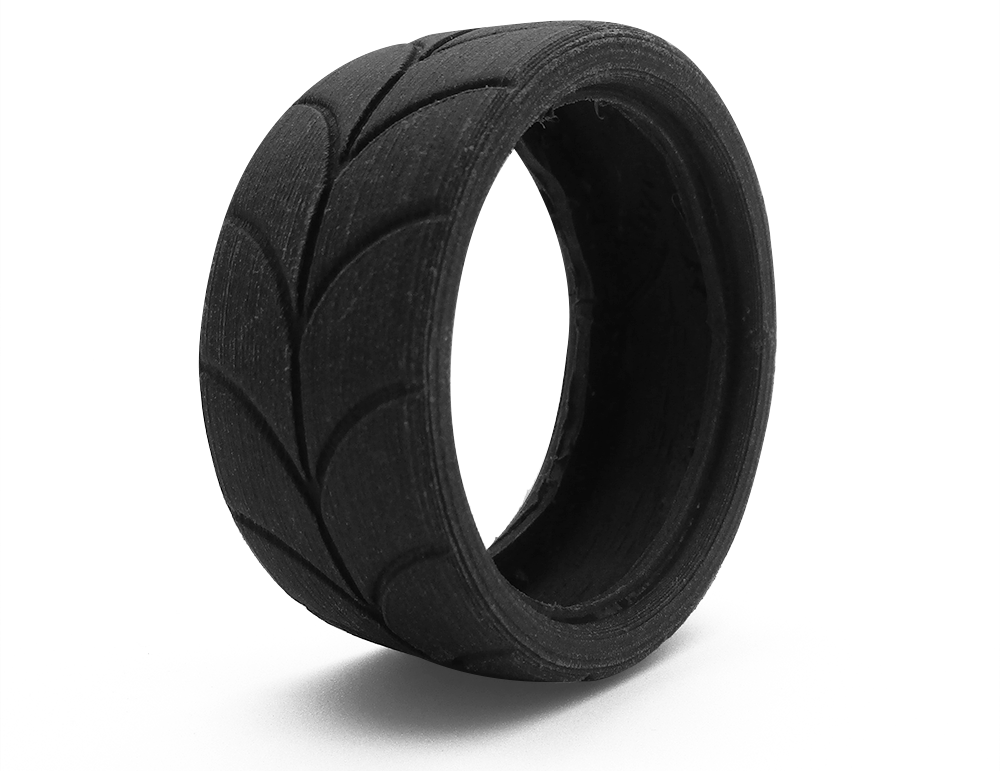
It is one of the first compostable flexible filaments on the market. The filament is made from a base of a biodegradable polymer and oyster powder. It has a off-white colour due to its filling with particles derived from oysters. As for its properties, it has a Shore 93A hardness, is easy to print and has good interlayer adhesion. The filament is suitable for food contact.
Hemp PLA (3D FUEL – Entwined)
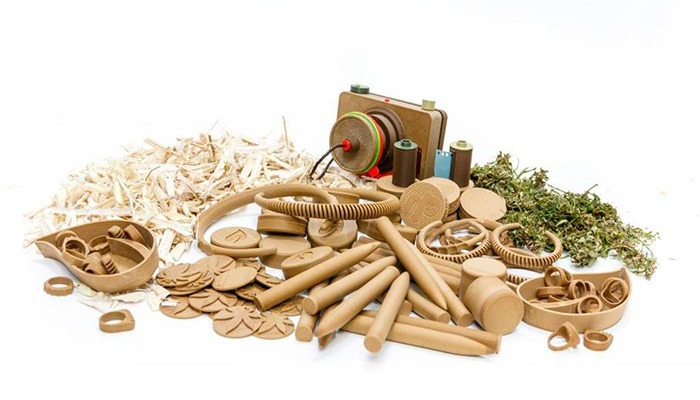
This filament has a PLA base that acts as a binder for the hemp particles. The use of hemp on an industrial level is very interesting from a sustainability point of view, as hemp crops grow more densely compared to corn and other plants, and crops for industrial use do not require the application of herbicides or pesticides, which reduces pollution and impact on the environment.
It has a brown colour that is not due to synthetic dyes but to its natural composition. The hemp filler is visible in the material in the form of darker coloured particles.
Algae PLA (3D Printlife – Algix)
This filament has a PLA base that is combined with enviromental harmful algae that have been removed from the environment. Harmful algal growth is becoming more and more frequent and a huge problem, as algal proliferation can deny oxygen to aquatic ecosystems, reducing biodiversity and the number of fish. These filaments of algae usually contain about 20% algae.
Wood PLA
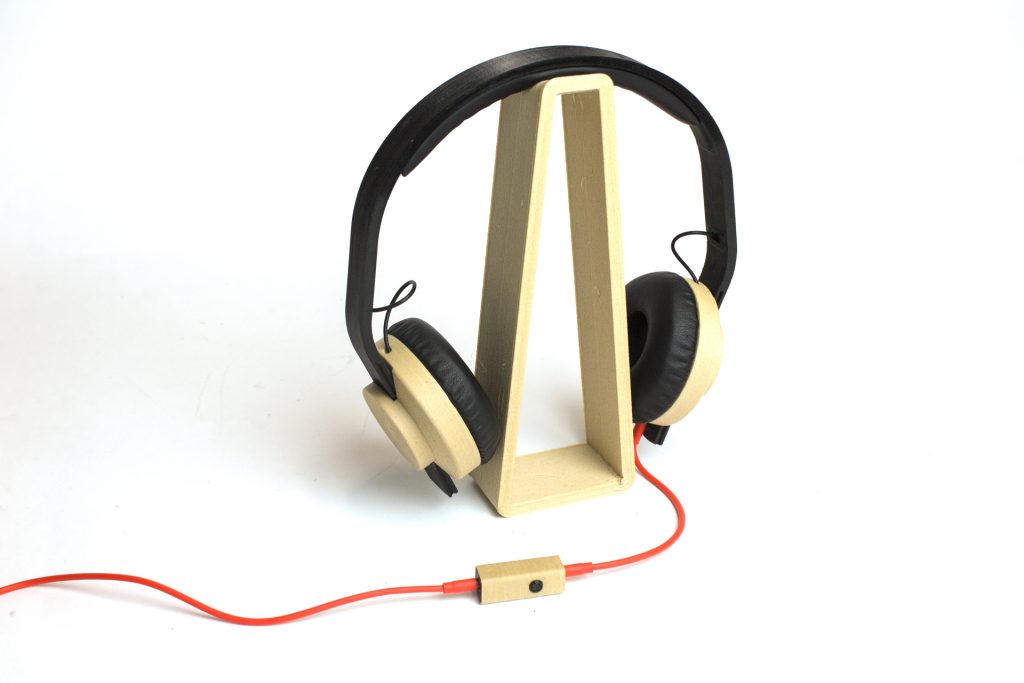
There are numerous manufacturers of biocomposites based on PLA and wood fibres. These composites can contain up to 40% wood fibres. The finish of the pieces printed with this material has a matte and textured surface due to the wood content, and also retains the characteristic smell of wood. Wood PLA can be obtained in different colours depending on the fibres it contains, including alder, birch, cedar, coconut, pine, willow, etc. After printing it can be post-processed and sanded just like wood.
Mineral filled PLA (Polymaker – PolyTerra)
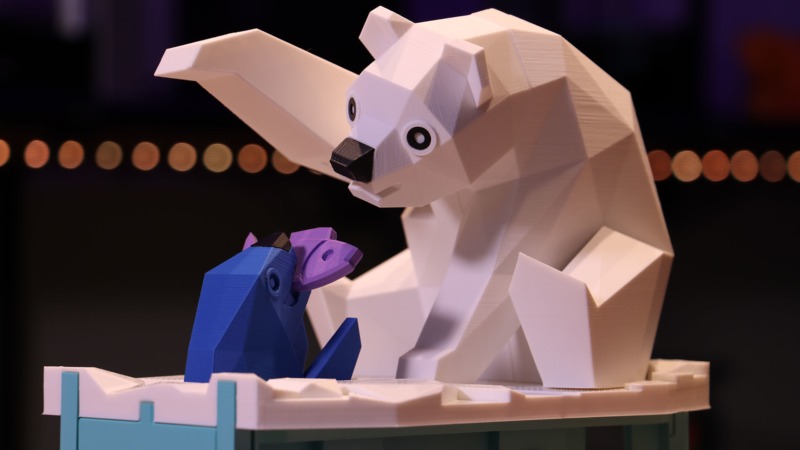
This material combines PLA with organic minerals, which significantly reduces the plastic content of the filament. It has a completely matt surface finish, which helps to hide coating lines. It has a higher strength than standard PLA and a similar stiffness to standard PLA. It is easy to post process and the supports are easier to remove. Thanks to its porous surface, the pieces can be easily painted, making it ideal for producing figures or complements. It is available in several colours.
Coffee PLA (3D FUEL – Wond up)
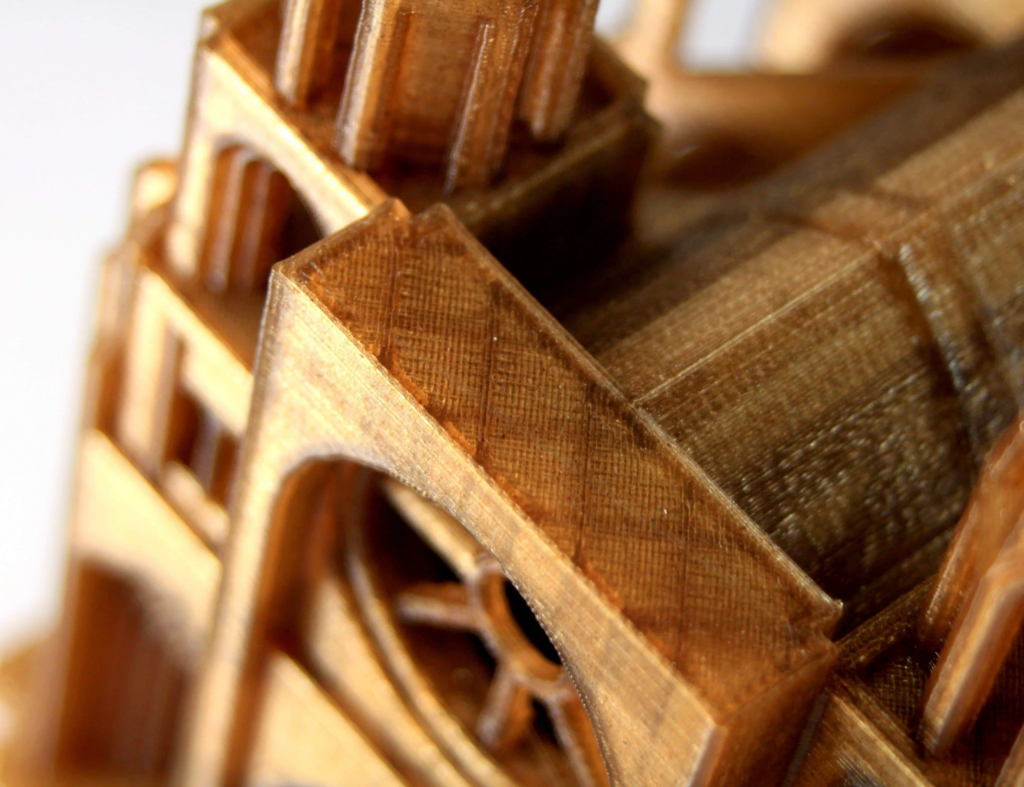
This bicomposite has a PLA base to which coffee waste by-products (coffe grounds) are added. The filaments have a certain degree of translucency and a brown colour that is not due to synthetic dyes but to their natural composition. It also has a grainy texture and a very different finish to other materials, that can be positive when producing objects such as lamps, vases and other items of design and decoration.
Mango for example has created a collection of jewellery pieces produced in 3D printing using 90% sustainable materials. The collection is inspired by Mediterranean craftsmanship. The materials used are bio-based and biodegradable polymer matrixes filled with materials such as birch, terracotta, wood and ceramics. Pieces in the collection range in price from $50 to $60.
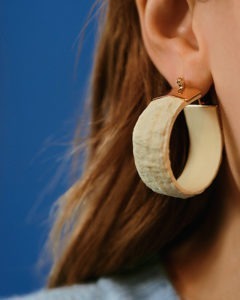

Selection guide for sustainable 3D printing materials
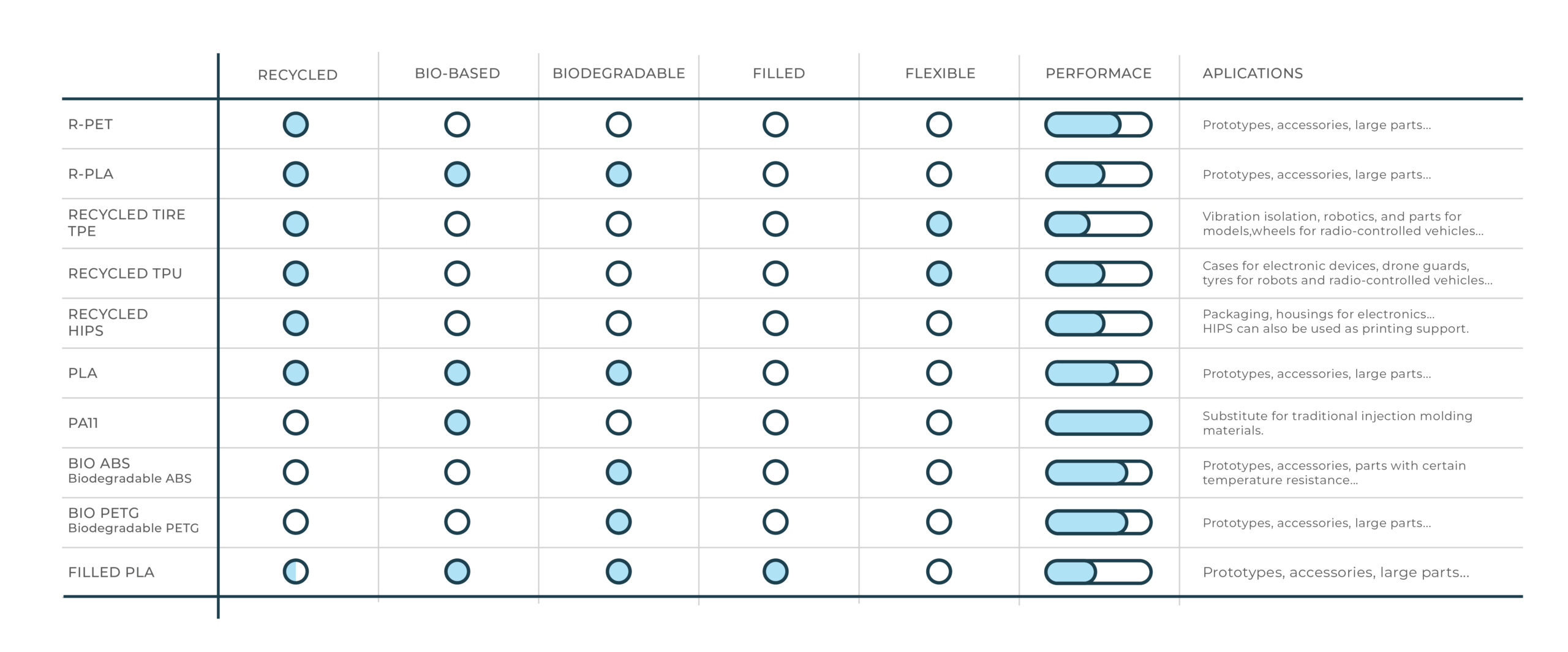
There are already many different options within sustainable materials. Of course, it has to be said that many of them are not high-performance and technical materials. Looking at recent developments however, this is for sure going to change within the near future.
Do you want to learn more about 3D printing sustainability? Do check out our other blog articles from the series:
Now it is your time! Do you want to rethink your products and make them more sustainable? Contact us and we can have a look at your parts.
Related Posts
Categories
- 3D printing industries (5)
- 3D Printing Materials (1)
- Basics (3)
- News (1)
- Point of View (7)
- Press (17)
- Press (17)
- Sustainability (3)
- Technology (5)
- Uncategorized (1)
- White Paper (1)
